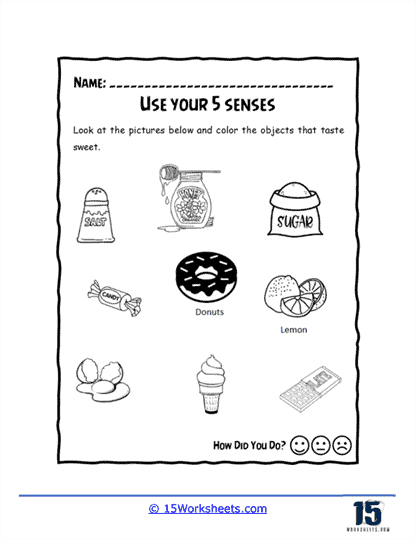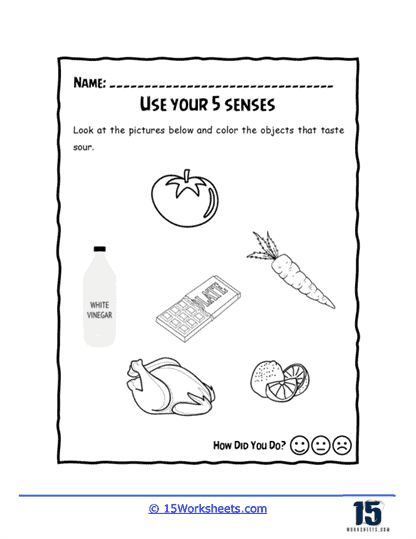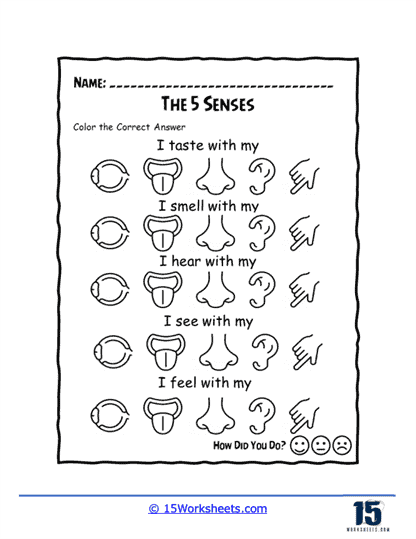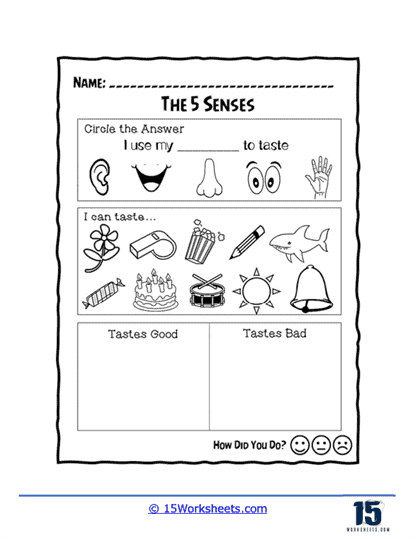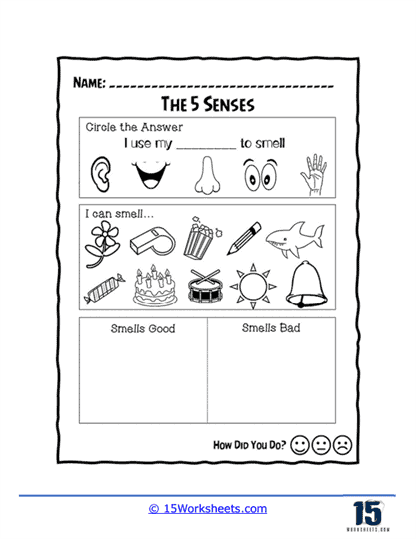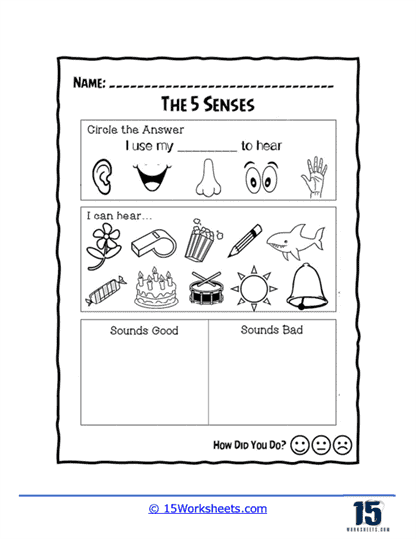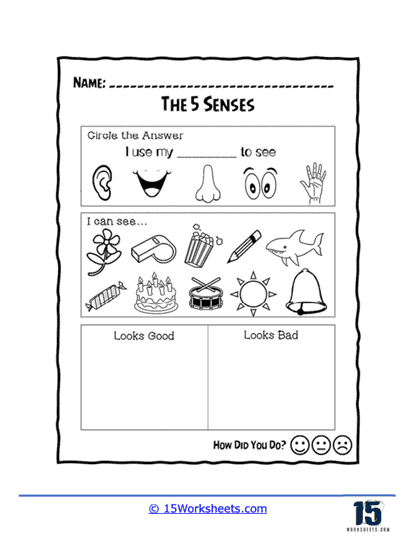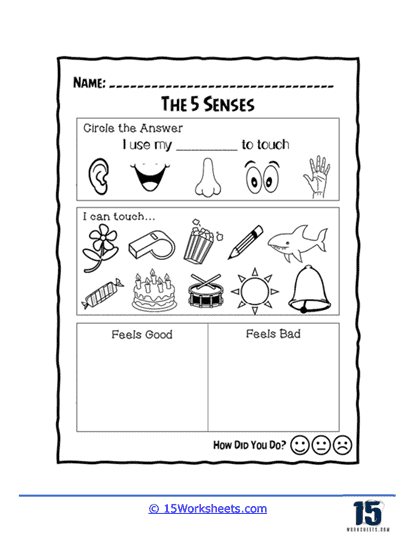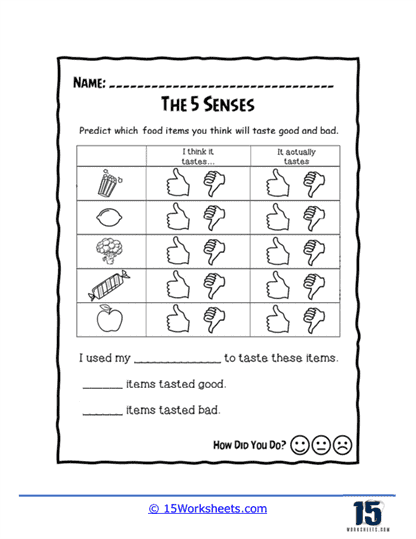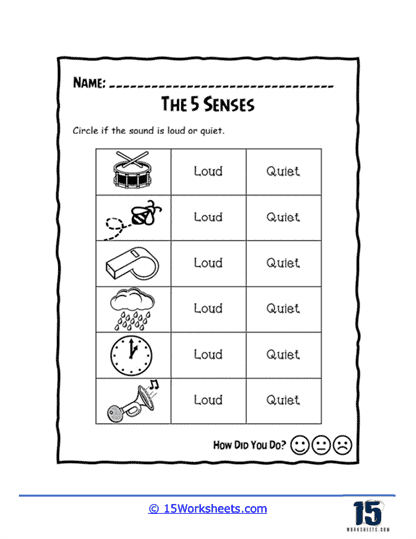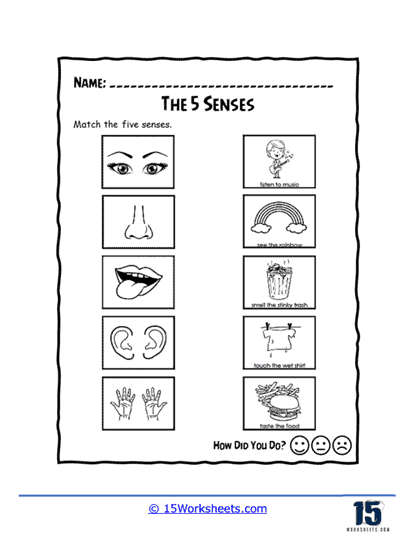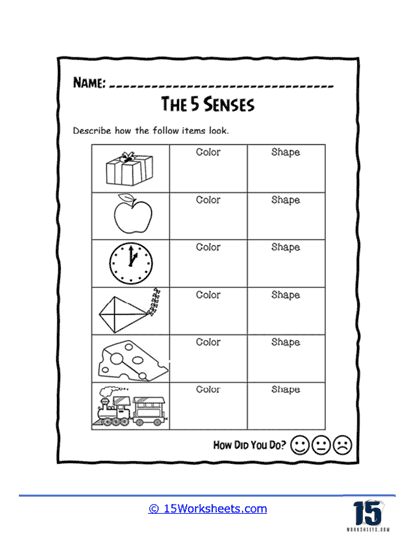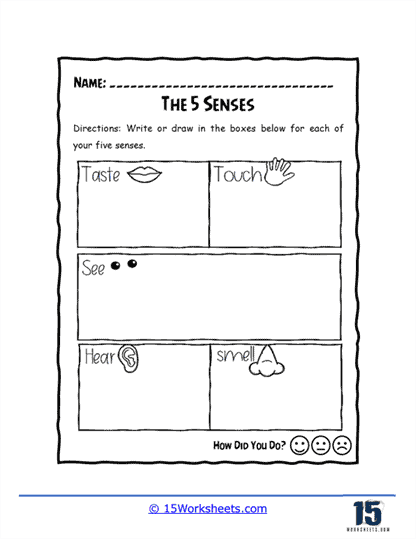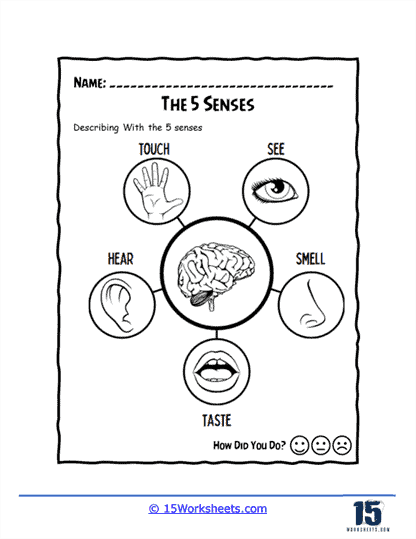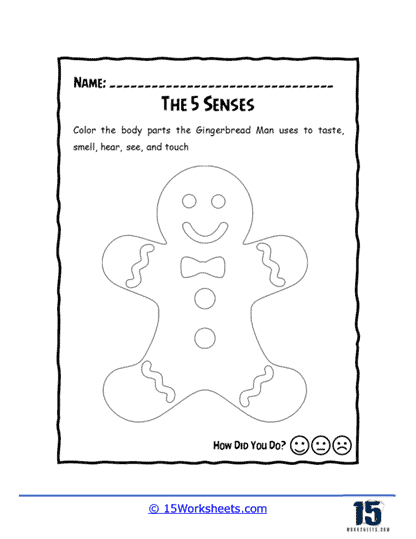Five Senses Worksheets
All About These 15 Worksheets
Young learners embark on an immersive exploration of the five senses with this series of Kindergarten worksheets. This collection is designed to introduce students to the fascinating world of sensory perception, fostering their understanding of how we experience the world around us. Through a variety of interactive exercises, students will engage in coloring activities, matching tasks, descriptive exercises, and more.
These worksheets provide opportunities for hands-on exploration, critical thinking, and vocabulary development. By participating in these activities, students will deepen their understanding of the five senses, enhance their cognitive abilities, and develop a solid foundation for future learning in science and daily life experiences. Through these worksheets, students will:
- Color pictures of different foods that represent sweet or sour tastes, reinforcing vocabulary and sensory perception;
- Color or circle the correct answer about the functions of the five senses, promoting comprehension of sensory functions;
- Distinguish between bad and good tastes and loud and quiet sounds by coloring or circling the correct answer, enhancing sensory discrimination;
- Match the five senses to their respective functions, reinforcing knowledge of sensory perception and comprehension;
- Describe different items based on their color and shape, fostering vocabulary development and descriptive skills;
- Write or draw the function of each of the five senses, promoting critical thinking and reinforcing understanding of sensory perception;
- And color the body parts that the gingerbread man uses for its five senses, enhancing understanding of the connection between body parts and sensory perception while honing their creativity.
Through this engaging series of Five Senses worksheets, young learners will embark on a journey of sensory exploration. By participating in activities that involve coloring, matching, descriptive tasks, and sensory identification, students will deepen their understanding of how we experience the world around us.
These worksheets provide opportunities for hands-on exploration, critical thinking, and vocabulary development. By engaging with these exercises, students will develop a foundation for understanding the five senses, enhance their cognitive abilities, and foster a greater appreciation for the richness of sensory perception. Ultimately, this collection serves as a stepping stone for deeper explorations of the human body and sensory experiences, nurturing a sense of curiosity and scientific inquiry in young learners.
What Are the Five Human Senses?
The five senses: sight, hearing, taste, touch, and smell—are the primary ways through which we interact with our surroundings. They enable us to perceive and understand the world in all its complexity.
Sight
Sight, or vision, is the capability to detect light and interpret it as “seeing.” This sense is facilitated by our eyes, which capture light and convert it into electrochemical signals for our brains to process. Sight allows us to identify colors, perceive depth, and recognize shapes, distances, and sizes.
For instance, sight helps us enjoy the vibrant colors of a sunset, navigate through a crowded room without bumping into people or objects, or read the words you’re currently scanning. It’s crucial for many of our day-to-day activities, from the simplest to the most complex.
Hearing
Our sense of hearing, or audition, enables us to perceive sounds by detecting vibrations through our ears. The outer ear captures sound waves, which are then processed by the inner ear and sent as electrical signals to the brain.
Through hearing, we can enjoy a symphony of sounds: the soothing melody of our favorite song, the rustle of leaves underfoot, the murmur of a flowing stream, or the cheerful chatter of a friend. Moreover, it allows us to recognize danger, like the sound of a fast-approaching vehicle or a fire alarm.
Taste
Taste, also known as gustation, is the sense that allows us to perceive different flavors in our food and drink. Our taste buds, located primarily on our tongue, are the heroes behind this sense. They identify five basic tastes: sweet, sour, salty, bitter, and umami (a savory, meaty flavor).
Think about savoring a piece of dark chocolate—first, the bitterness hits you, then the sweetness. Or recall the last time you relished a bowl of hot soup, rich with flavors of vegetables, herbs, and perhaps a hint of saltiness. These experiences are all thanks to our sense of taste.
Touch
Touch, or tactile sense, is our ability to perceive pressure, pain, heat, cold, and vibrations. Our skin, the largest organ in our body, contains various types of nerve endings that recognize these sensations.
We experience touch in countless ways every day. Whether it’s the softness of a cotton t-shirt against your skin, the warmth of a mug of hot coffee in your hands, the cool breeze brushing against your face, or the uncomfortable prick of a thorn, each experience is unique and informs us about our environment.
Smell
Our sense of smell, or olfaction, enables us to detect and distinguish odors. Located in the upper part of our nasal passages, our olfactory receptors process chemical signals from odorous substances and communicate them to our brain.
The fragrance of fresh flowers in bloom, the tantalizing aroma of freshly baked bread, the distinctive smell of rain on dry soil, or the sharp odor of a gas leak-all are picked up by our sense of smell. It not only adds depth to our sensory experiences but also serves as a valuable warning system for potential dangers.

